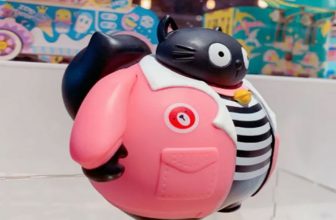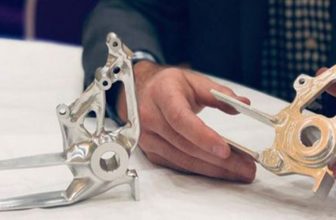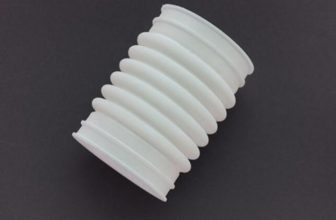
3D printing molds relieve the production difficulties of forehead guns for emergency exits, and the cooling time of injection molding is reduced by 45%
Focus on speeding up production
There are many components inside the forehead gun shell, such as batteries, sensors, coils, etc. These components need to be fixed to ensure that they work well. Many ribs and stuck positions inside the forehead gun shell It is the fixation effect.
However, the existence of these ribs and jams has increased the difficulty of mold opening. One is that the existence of ribs and jams increases the complexity of the mold structure, and the other is that these parts must be well cooled to not drag down the production cycle.
The waterway system is a very important part of the mold structure. The waterway is related to the length of time for the product to reach the ejection temperature, in other words, the length of injection molding time, and also whether the mold temperature is balanced, because the mold temperature directly affects the molding of the injection product. quality.
Traditional waterways are mostly processed by traditional machine tools such as milling machines and CNCs. Due to the processing methods of traditional machine tools, the waterways can only go straight. Due to the existence of thimble and deep ribs inside the forehead temperature gun, the bottom of the forehead temperature gun shell cannot go through the waterway. The main reaction is that the ribs on the back of the mold cannot be cooled well, which leads to a long cooling cycle and uneven mold temperature.
An international foreign trade supplier that urgently needs the forehead gun to open the mold contacted ESU Yisu product designer, whether 3D printing can help him quickly open the mold and improve the forehead gun mold to improve their production efficiency. In order to support the needs of international epidemic prevention and control, ESU Yisu mold design department immediately organized a plan discussion meeting.
Based on years of design and production experience in mold 3D printing, ESU finally formulated a 3D printing plan for forehead temperature gun molds: 3D printing conformal waterways throughout the forehead temperature gun mold cavity.
The mold parts manufactured by laser melting metal 3D printing technology in selected areas are formed by stacking layers of metal powder. In this way, the waterway design will no longer be restricted by the product structure of the forehead thermometer, and the designer can more “as much as he wants” to make the waterway all over the place. Mold cavity
After the 3D printed sample of the forehead temperature gun mold was formed, the mold flow analyst conducted a proper evaluation before the product was delivered, and published the comparison data of the mold flow analysis results.
Through the data analysis of the mold flow results, we can clearly see that the time for the forehead gun injection product to reach the low temperature of the ejection of the mold formed by the 3D printing technology solution is 9 seconds, while the ordinary solution requires 17 seconds, which is a year-on-year increase in speed. 8 seconds, nearly 45%.
Regarding the temperature of the parts, the maximum temperature of the plastic part in the ordinary solution is about 42°C, and the temperature of the same part of the plastic part using the 3D printing solution is only 27°C, a drop of 15°C, about 34%.
Comprehensive ESU Yisu mold flow analysis data results: the 3D printing solution can shorten the cooling time of plastic parts by nearly 45%; reduce the temperature of plastic parts by 34%, thereby improving production efficiency, balancing the temperature of plastic parts and reducing defects. Thanks to the 3D printing process, the waterway design becomes “unfettered”, which can be evenly distributed along the shape of the product, without dead corners and stagnant water, and truly achieve a balanced mold temperature.
In addition, at this stage, the demand for forehead guns is greatly increasing. The output of a set of molds cannot meet the demand. Therefore, many manufacturers have to open new copy molds to increase production capacity and meet market demand. And 3D printing offers another possibility, which is to greatly shorten the production cycle and increase the output through the conformal waterway, thereby saving the cost of using the newly opened copy mold and the injection molding machine, and bringing the added value of reducing the production cost of injection molding for manufacturers.
The 3D printing conformal cooling mold is a good solution to the current problems faced by the manufacturers of forehead gun shells.





